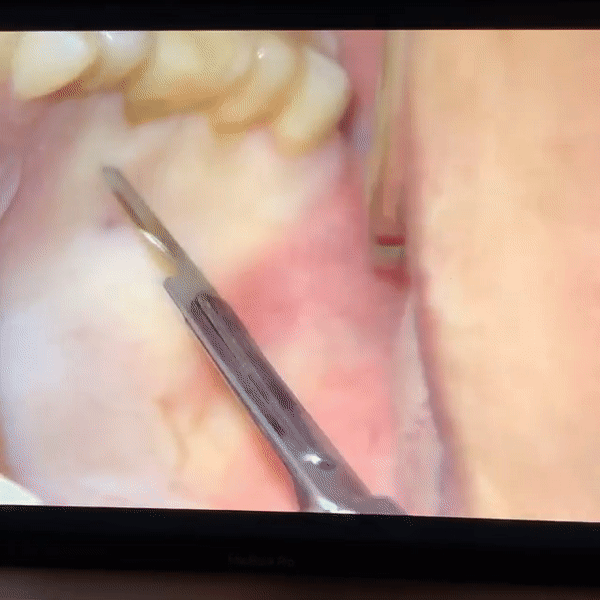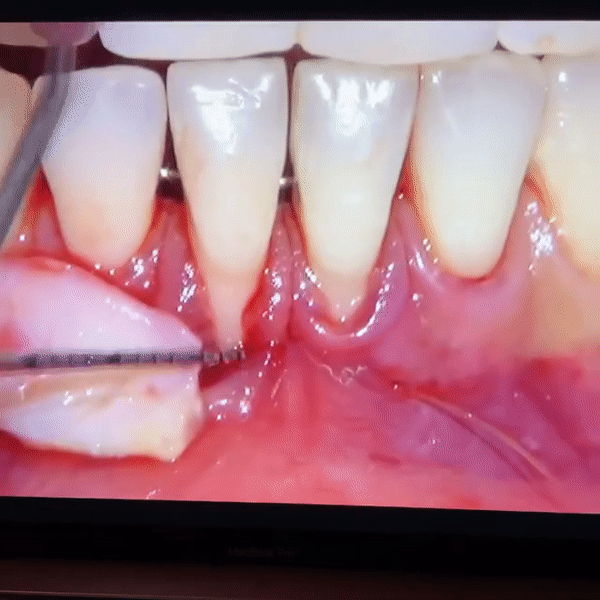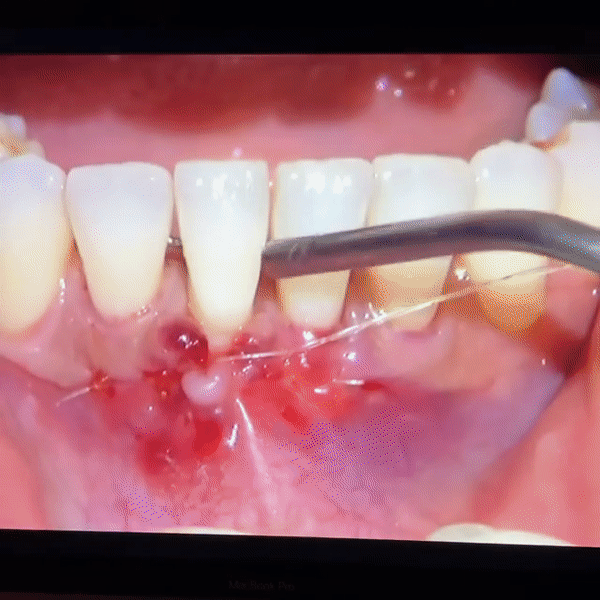| As shown by Professor Heitor Cosenza, the surgical visit begins with local infiltration of anesthesia in the vestibule and in the palate. Care is taken not to inject intrapapillary or intrasulcularly, especially because of the use of an epinephrine-infused anesthetic, so as not to compromise vascularity to those areas during or after the surgery. The root surfaces are planed and treated for 4 to 5 minutes with a tetracycline HCL paste, which was made by mixing the antibiotic with saline. |
| Sulcular incisions on the labial and buccal are performed with a Bard-Parker™ No. 15 blade (Becton, Dickinson, and Co, Franklin Lakes, NJ) to begin the partial-thickness dissection. |

Subepithelial CTGs are harvested from both sides of the palate and measured for dimensional appropriateness in the areas of the defects. The CTGs is trimmed to size using sharp surgical blades. Of course, critical papillae, such as at the midline, should never be compromised.


After the grafts is in place, the graft is stabilized with the overlying gingival flap. In the papillae regions, vertical mattress monofilament sutures of 5-0 and 6-0 were used for this purpose (Monocryl™, Ethicon, Inc, Somerville, NJ). This periodontal plastic microsurgical approach to flap dissection and suturing is much less traumatic to the surrounding tissue and is, therefore, more likely to better maintain the vascularity of the surgical site during the critical early healing period.

The patient should be instructed not to brush the surgical sites for the first 2 weeks. Instead, during that time, he was instructed to rinse with 0.2% chlorhexidine digluconate for 2 to 3 times per day. Anti-inflammatory and pain control medications were prescribed for use as needed. At the 2-week postoperative visit, any remaining sutures were removed and oral hygiene and plaque control was reviewed and reinforced.
Today’s Morning Huddle was brought to you by Professor Heitor Cosenza.
Instagram @prof_heitorcosenza


